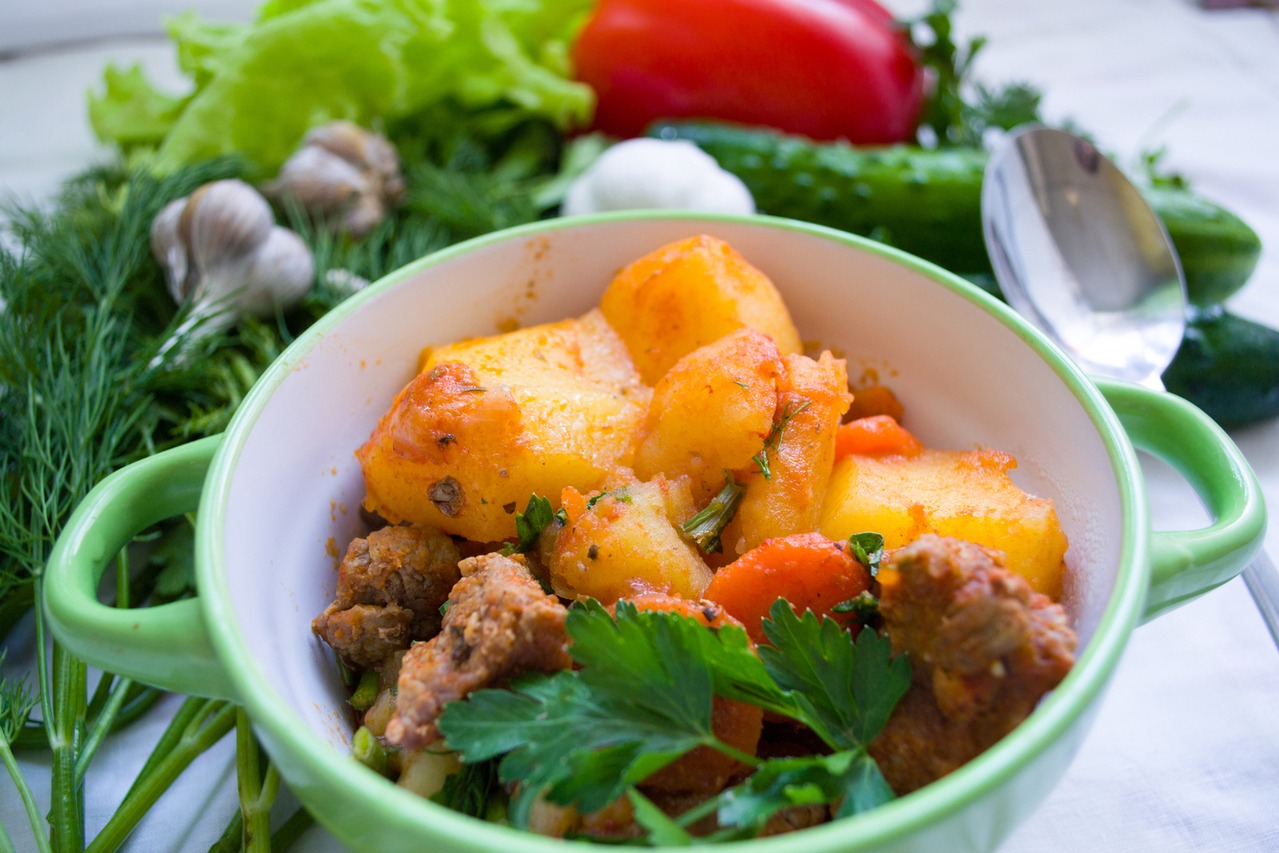Living Gluten-Free: Tips and Strategies for a Healthy Lifestyle

Gluten has become a buzzword in the world of health and nutrition, but what exactly is it and why does it matter? Gluten is a protein found in wheat, barley, and rye, and it plays a crucial role in the structure and texture of many foods. However, for those with gluten sensitivities or celiac disease, consuming gluten can have serious health consequences. Understanding gluten and its impact on health is essential for anyone who needs to follow a gluten-free diet.
For individuals with gluten sensitivities or celiac disease, consuming gluten can lead to a range of symptoms, including digestive issues, fatigue, skin problems, and more. Celiac disease is an autoimmune disorder in which the body’s immune system reacts negatively to gluten, causing damage to the small intestine. Gluten sensitivities, on the other hand, may not involve an autoimmune response but can still cause uncomfortable symptoms. It is important for individuals with these conditions to understand what gluten is and how it affects their bodies.
Table of Contents
Key Takeaways
- Gluten is a protein found in wheat, barley, and rye that can cause digestive issues for some people.
- Going gluten-free involves avoiding foods that contain gluten and choosing alternatives like rice, quinoa, and corn.
- Benefits of a gluten-free lifestyle may include improved digestion, increased energy, and reduced inflammation.
- When meal planning, focus on whole foods and read labels carefully to avoid hidden sources of gluten.
- Eating out gluten-free requires communication with restaurant staff and careful menu selection.
Understanding Gluten: What It Is and Why It Matters
Gluten is a protein composite that gives elasticity to dough and helps it rise. It is found in wheat, barley, and rye, as well as products made from these grains. When individuals with gluten sensitivities or celiac disease consume gluten, their immune system reacts negatively, leading to inflammation and damage to the small intestine. This can result in a range of symptoms such as abdominal pain, bloating, diarrhea, fatigue, and even nutrient deficiencies.
Common foods that contain gluten include bread, pasta, cereal, baked goods, beer, and many processed foods. It is important for individuals with gluten sensitivities or celiac disease to carefully read food labels and avoid products that contain gluten. Additionally, cross-contamination can occur in kitchens or restaurants where gluten-containing foods are prepared alongside gluten-free options. This can make it challenging for individuals with gluten sensitivities or celiac disease to find safe and suitable food options.
Gluten-Free Eating: A Beginner’s Guide
Eating gluten-free means avoiding all foods that contain gluten. This includes obvious sources such as bread, pasta, and baked goods, but also hidden sources such as sauces, dressings, and processed foods. It is important to read food labels carefully and look for gluten-free certifications or labels. Additionally, individuals with gluten sensitivities or celiac disease should be cautious when dining out or eating at social gatherings, as cross-contamination can occur.
Transitioning to a gluten-free lifestyle can be challenging at first, but there are many resources available to help. It is important to focus on whole, unprocessed foods such as fruits, vegetables, lean proteins, and gluten-free grains like quinoa and rice. There are also many gluten-free alternatives available for common foods like bread and pasta. Experimenting with new recipes and trying out different gluten-free products can make the transition easier and more enjoyable.
The Benefits of a Gluten-Free Lifestyle
While a gluten-free lifestyle is essential for those with gluten sensitivities or celiac disease, it can also have benefits for others. Improved digestion and gut health are often reported by individuals who eliminate gluten from their diet. Gluten can be difficult to digest for some people, leading to bloating, gas, and other digestive issues. Removing gluten from the diet can alleviate these symptoms and promote a healthier gut.
Increased energy and better sleep are also commonly reported benefits of a gluten-free lifestyle. Many individuals find that eliminating gluten from their diet improves their overall energy levels and helps them sleep more soundly at night. This may be due to the fact that consuming gluten can cause inflammation in the body, which can lead to fatigue and disrupted sleep patterns.
Weight loss and improved skin health are two additional benefits that some individuals experience when following a gluten-free diet. Gluten-containing foods are often high in calories and can contribute to weight gain. By eliminating these foods, individuals may naturally consume fewer calories and lose weight. Additionally, some skin conditions, such as eczema, may improve when gluten is removed from the diet.
Gluten-Free Meal Planning: Tips and Tricks
Meal planning is an essential part of following a gluten-free diet. By planning meals in advance, individuals can ensure that they have gluten-free options available and avoid the temptation to reach for gluten-containing foods. When planning meals, it is important to focus on whole, unprocessed foods such as fruits, vegetables, lean proteins, and gluten-free grains.
Tips for meal prepping and batch cooking can also make following a gluten-free diet easier. By preparing meals in advance and portioning them out, individuals can save time and ensure that they always have a healthy, gluten-free option available. Batch cooking can also be helpful for busy individuals who don’t have time to cook every day. By cooking large batches of gluten-free meals and freezing them, individuals can have quick and easy options on hand.
There are many resources available for finding gluten-free recipes. Websites, cookbooks, and social media platforms are filled with delicious and creative gluten-free recipes that can make meal planning more exciting. It is important to experiment with different recipes and find ones that suit individual tastes and preferences.
Gluten-Free Grocery Shopping: How to Read Labels

Reading food labels is crucial for individuals following a gluten-free diet. It is important to understand what ingredients to look out for and how to identify gluten-containing products. Some common ingredients that contain gluten include wheat, barley, rye, malt, and brewer’s yeast. However, there are many other ingredients that may contain hidden sources of gluten.
When shopping for gluten-free products in the grocery store, it is helpful to look for products that are labeled as “gluten-free” or have a gluten-free certification. This ensures that the product has been tested and meets the necessary standards for a gluten-free diet. Additionally, many grocery stores have dedicated gluten-free sections or labels on their shelves to make it easier for individuals to find suitable products.
Shopping for gluten-free products on a budget can be challenging, as gluten-free alternatives are often more expensive than their gluten-containing counterparts. However, there are ways to save money while still following a gluten-free diet. Buying in bulk, shopping sales, and focusing on whole, unprocessed foods can help keep costs down. Additionally, some grocery stores offer discounts or loyalty programs for gluten-free products.
Gluten-Free Cooking: Easy and Delicious Recipes
Cooking gluten-free meals can be simple and delicious with the right recipes and techniques. There are many easy and flavorful recipes available that don’t require any special ingredients or equipment. For breakfast, options like gluten-free oatmeal with fresh fruit, scrambled eggs with vegetables, or smoothies made with dairy-free milk and protein powder are all great choices.
For lunch and dinner, there are endless possibilities for gluten-free meals. Salads with grilled chicken or fish, stir-fries with gluten-free soy sauce, and roasted vegetables with quinoa or rice are all tasty options. It is important to focus on using fresh ingredients and experimenting with different flavors and seasonings to keep meals interesting.
Modifying recipes to make them gluten-free is also possible with a few simple substitutions. For example, using gluten-free flour blends instead of regular flour in baking recipes can yield delicious results. Additionally, there are many gluten-free pasta options available that can be used in place of traditional pasta in recipes.
Eating Out Gluten-Free: Navigating Restaurants and Menus
Eating out can be challenging for individuals following a gluten-free diet, but with some preparation and communication, it is possible to dine out safely. When choosing a restaurant, it is helpful to research ahead of time and look for establishments that offer gluten-free options or have a dedicated gluten-free menu. Many restaurants now cater to individuals with dietary restrictions and can accommodate gluten-free requests.
When dining out, it is important to communicate your gluten-free needs to restaurant staff. This includes informing the server of your dietary restrictions and asking questions about how dishes are prepared. It is also important to be aware of the risk of cross-contamination, as gluten-containing foods may be prepared in the same kitchen or with the same utensils as gluten-free options. Asking about cross-contamination protocols and requesting that your meal be prepared separately can help minimize the risk.
Reading menus carefully and asking questions about ingredients and preparation methods can also help individuals find suitable gluten-free options. Many restaurants now indicate which dishes are gluten-free or can be modified to be gluten-free on their menus. It is important to be proactive and advocate for your dietary needs when dining out.
Gluten-Free Travel: Tips for Staying Healthy on the Go
Traveling can pose additional challenges for individuals following a gluten-free diet, but with some planning and preparation, it is possible to stay healthy on the go. When planning a trip, it is helpful to research ahead of time and identify restaurants or grocery stores that offer gluten-free options in the area you will be visiting. Additionally, packing gluten-free snacks and meals can ensure that you have suitable options available during your travels.
When dining out while traveling, it is important to communicate your dietary needs to restaurant staff, just as you would at home. Asking questions about ingredients, preparation methods, and cross-contamination protocols can help ensure that your meal is safe and suitable. It may also be helpful to carry a card or document that explains your dietary restrictions in the local language, especially if you are traveling to a country where English is not widely spoken.
Packing gluten-free snacks and meals for the road can help avoid the temptation to reach for gluten-containing options while traveling. Portable options such as gluten-free granola bars, nuts, seeds, and dried fruit can be easily packed and provide a quick and convenient snack. Additionally, packing gluten-free sandwiches or salads for longer journeys can ensure that you have a healthy and satisfying meal available.
Gluten-Free and Nutrition: Ensuring a Balanced Diet
Following a gluten-free diet can sometimes lead to nutrient deficiencies if not properly planned. It is important to ensure that a gluten-free diet is balanced and provides all the necessary nutrients. Focusing on whole, unprocessed foods such as fruits, vegetables, lean proteins, and gluten-free grains can help achieve this.
Some nutrients to pay attention to when following a gluten-free diet include fiber, iron, calcium, and B vitamins. Fiber can be found in fruits, vegetables, and gluten-free grains such as quinoa and brown rice. Iron-rich foods include lean meats, beans, lentils, and leafy greens. Calcium can be obtained from dairy products or dairy alternatives fortified with calcium. B vitamins can be found in foods such as eggs, meat, fish, and fortified gluten-free products.
Supplementing a gluten-free diet with vitamins and minerals may be necessary for some individuals. It is important to consult with a healthcare professional or registered dietitian to determine if supplementation is necessary and to ensure that the appropriate dosage is taken.
Living Gluten-Free: Coping with Challenges and Staying Positive
Living a gluten-free lifestyle can come with its challenges, but there are ways to overcome them and stay positive. One common challenge is social situations where gluten-containing foods are present. It can be difficult to navigate these situations without feeling left out or deprived. However, focusing on the delicious gluten-free options that are available and finding support from friends and family can help make these situations more enjoyable.
Another challenge is the availability of gluten-free options in certain areas or when traveling. It can be frustrating to not have access to suitable food options, but with some planning and preparation, it is possible to find or bring gluten-free options. Researching ahead of time, packing snacks and meals, and communicating your dietary needs can help overcome this challenge.
Finding support and community as a gluten-free individual can also be helpful in coping with the challenges that may arise. There are many online forums, support groups, and social media communities dedicated to individuals following a gluten-free lifestyle. Connecting with others who share similar experiences can provide a sense of belonging and offer valuable advice and tips.
Understanding gluten and its impact on health is essential for individuals with gluten sensitivities or celiac disease. Following a gluten-free lifestyle can improve digestion, increase energy levels, promote weight loss, and improve skin health. Meal planning, grocery shopping, cooking, dining out, and traveling can all be done successfully while following a gluten-free diet with some preparation and communication. Ensuring a balanced diet and finding support from others can help individuals cope with the challenges that may arise. Overall, a gluten-free lifestyle can be rewarding and beneficial for those who need to follow it.
If you’re living a gluten-free lifestyle, you may also be interested in learning about the health benefits and uses of turmeric and curcumin. Turmeric has long been used in traditional medicine for its anti-inflammatory properties and potential to improve digestion. This article provides a comprehensive guide to understanding turmeric and how it can support your overall well-being.
FAQs
What is gluten?
Gluten is a protein found in wheat, barley, and rye. It is responsible for the elasticity of dough and gives bread its chewy texture.
What is a gluten-free diet?
A gluten-free diet is a diet that excludes gluten-containing foods. It is essential for people with celiac disease, gluten sensitivity, or wheat allergy.
What are the benefits of a gluten-free diet?
A gluten-free diet can improve digestive health, reduce inflammation, and alleviate symptoms of celiac disease, gluten sensitivity, and wheat allergy.
What are some gluten-free foods?
Gluten-free foods include fruits, vegetables, meat, fish, poultry, dairy, legumes, nuts, and gluten-free grains such as rice, quinoa, and corn.
What are some gluten-containing foods?
Gluten-containing foods include bread, pasta, cereal, beer, and baked goods made with wheat, barley, or rye.
How can I maintain a gluten-free diet?
Maintaining a gluten-free diet requires reading food labels, avoiding cross-contamination, and planning meals ahead of time. It is also important to seek support from a registered dietitian or a support group.
What are some gluten-free substitutes for wheat flour?
Gluten-free substitutes for wheat flour include almond flour, coconut flour, rice flour, and tapioca flour. There are also many gluten-free flour blends available in stores.
Is a gluten-free diet suitable for everyone?
A gluten-free diet is necessary for people with celiac disease, gluten sensitivity, or wheat allergy. However, it is not recommended for people without these conditions as it may lead to nutrient deficiencies and an unbalanced diet.







